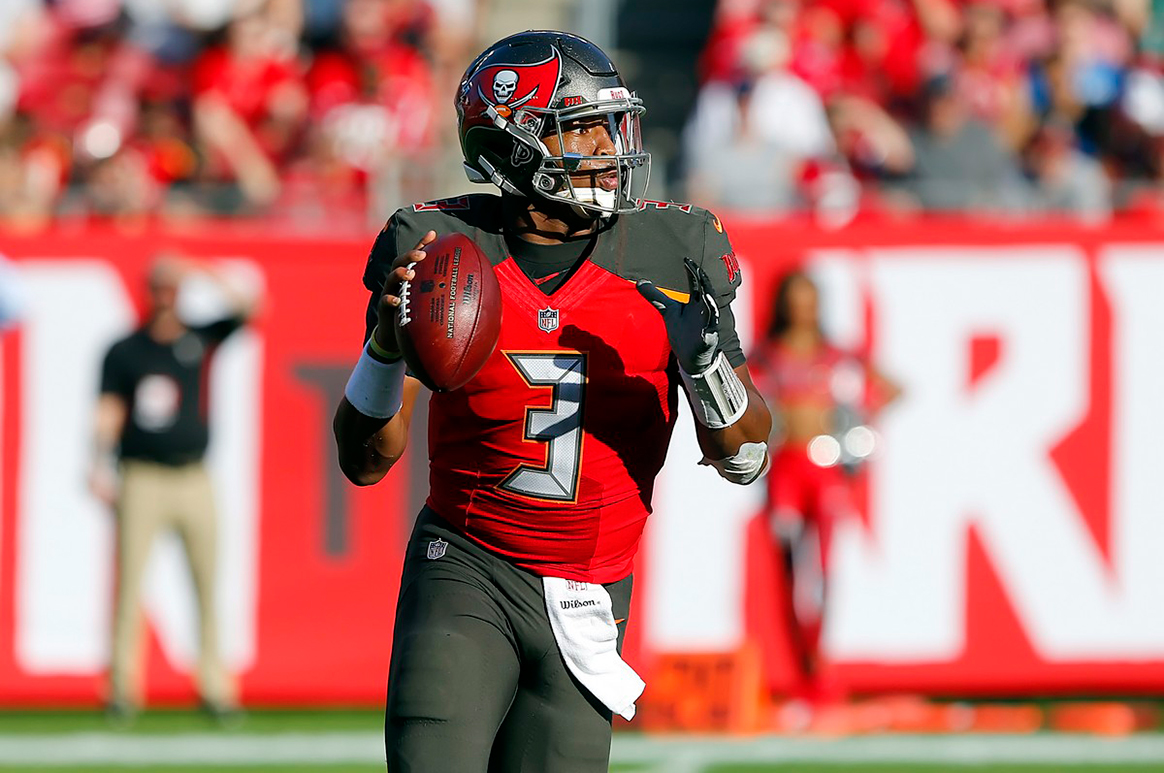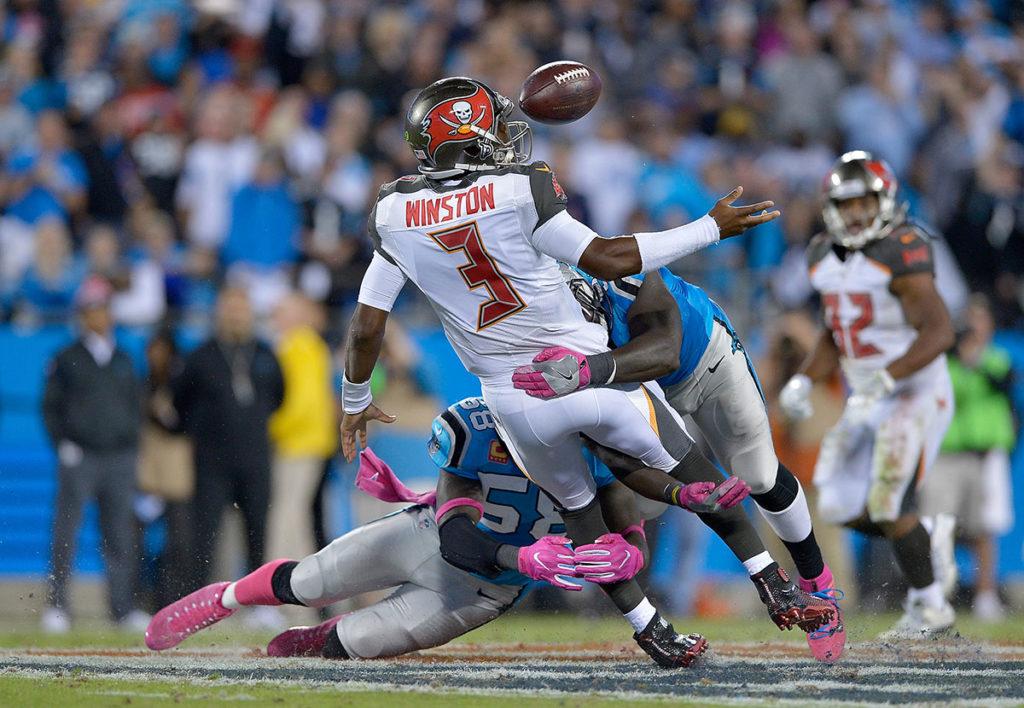Table of Contents
[adrotate group=”1″]
Ledyard’s 2020 Bucs Draft Picks
Bucs Biggest Needs (in order): OT, IDL, WR3, IOL, RB, TE/EDGE/CB/QB depth
Round 1 – Alabama OT Jedrick Wills
As someone who expects the first two tackles off the board to be Louisville’s Mekhi Becton and Iowa’s Tristan Wirfs, I’d do everything in my power as the Bucs to land the best tackle in the class in Wills. The Alabama right tackle has been a complete stud for three years now, but blossomed into a Top 5 player in the class this past season with the Crimson Tide. Wills’ feet are elite in pass protection, and the suddenness and power in his hands allowed him to dominate the highest levels of collegiate competition every week. If Tampa Bay comes away with Wills in Round 1, it’s hard to feel like anything else they do could mess up this draft.
Round 2 – Colorado WR Laviska Shenault, Jr.
I’m actually not as high on Shenault as many other analysts, but in Tampa Bay’s offense, it’s hard not to envision just how dynamic he could be. Shenault would also be a different type of threat to complement Mike Evans and Chris Godwin – one that wins primarily with the ball in his hands, but can also still stretch the field. Part of the problem for Shenault is that he rarely received quality targets in the vertical passing game, as his quarterback play was nothing short of atrocious at Colorado. The junior’s game needs polish, there’s no denying that, but he’ll enter a situation where he’s the third or fourth option in this team’s passing attack as a rookie. It’s the perfect role for Shenault, who can grow into more of a threat while learning from two of the best technicians in the game. Durability is a concern for Shenault, which drops him to the 45th pick in this scenario, but the Bucs are in position to roll the dice on his upside for the explosiveness he could provide an offense now over-flowing with splash play ability. In addition to his 10 receiving touchdowns, Shenault had seven rushing TDs as a Wildcat QB at Colorado over the last two seasons.
Round 3 – Utah RB Zack Moss
Moss might be a much higher pick, but it’s a deep running back class and he’s an older prospect with some minor injury concerns. I’m fine with all of that however, as Moss has shown the ability to break tackles and make defenders miss at an elite level in college, as well as contribute consistently as a receiver where he caught 66 passes for 685 yards and three TDs for the Utes. His pass protection isn’t bad either. Moss would be a good fit with Ronald Jones’ more explosive rushing style in the Bucs backfield. Moss, 5-foot-10, 222 pounds, finished his Utah career as the school’s all-time leading rusher with over 4,000 yards and 38 touchdowns.
Round 4 – Kentucky G Logan Stenberg
Stenberg was a pancake and penalty machine at Kentucky, playing with incredible physicality and nastiness to consistently finish blocks in the run game. He’s not the most athletic or explosive talent at guard, but he fits what the Bucs are trying to build as an imposing, technically-sound unit up front. The 6-foot-6, 317-pound Stenberg will push Alex Cappa for playing time right away if he can cut down the holding penalties. He’s the left guard (No. 71) in the highlight clip below.
Round 5 – Arkansas DL McTelvin Agim
At 6-foot-3, 309 pounds, Agim is a well-built defensive tackle with a quick first step and a bevy of rush moves. Watching his tape is not totally dissimilar from that of Rakeem Nunez-Roches, but with a little more polish. Agim may never be an every down defender in the NFL due to his high pad level and mediocre hand usage in the run game, but he has traits that are worth developing as a pass-down contributor who can move around the defensive front and be a nuisance as a penetrator.
Round 6 – Cincinnati TE Josiah Deguara
A physical, scrappy tight end who could project as an H-back in the NFL due to his lack of ideal size (6-2, 242), Deguara can give a running game flexibility right away with his blocking versatility, while also making an impact on special teams. There is nothing flashy or overly exciting about Deguara’s game, but he’s the ideal depth tight end because he can fill a lot of roles and be a presence in the locker room, weight room and on the sideline, which is exactly how Bruce Arians likes his tight ends.
Round 6 – Michigan State EDGE Kenny Willekes
Willekes is a try-hard edge defender who has overcome his lack of elite athleticism to become a productive player in the Big Ten. Sound familiar? No, he’s not as big or long as Carl Nassib, but Willekes will fit perfectly as a versatile, high-energy edge defender who can develop behind Barrett and JPP and provide depth and special teams help. Willekes had 23.5 sacks over his last three years, including 10 as a senior.
Round 7 – Michigan OL Jon Runyan
The 6-foot-4, 306-pound Runyan might kick inside at the NFL level, but I was impressed by how he held his own in match-ups against Iowa’s A.J. Epenesa and Penn State’s Yetur Gross-Matos. Physically there are some concerns that would suggest a limited ceiling, but Runyan tested better than expected at the NFL Scouting Combine, and is one of the smartest, hardest-working players in the class. He could fill a role as the team’s fourth tackle and fourth interior offensive lineman as well, potentially even learning some center to back up Ryan Jensen.




